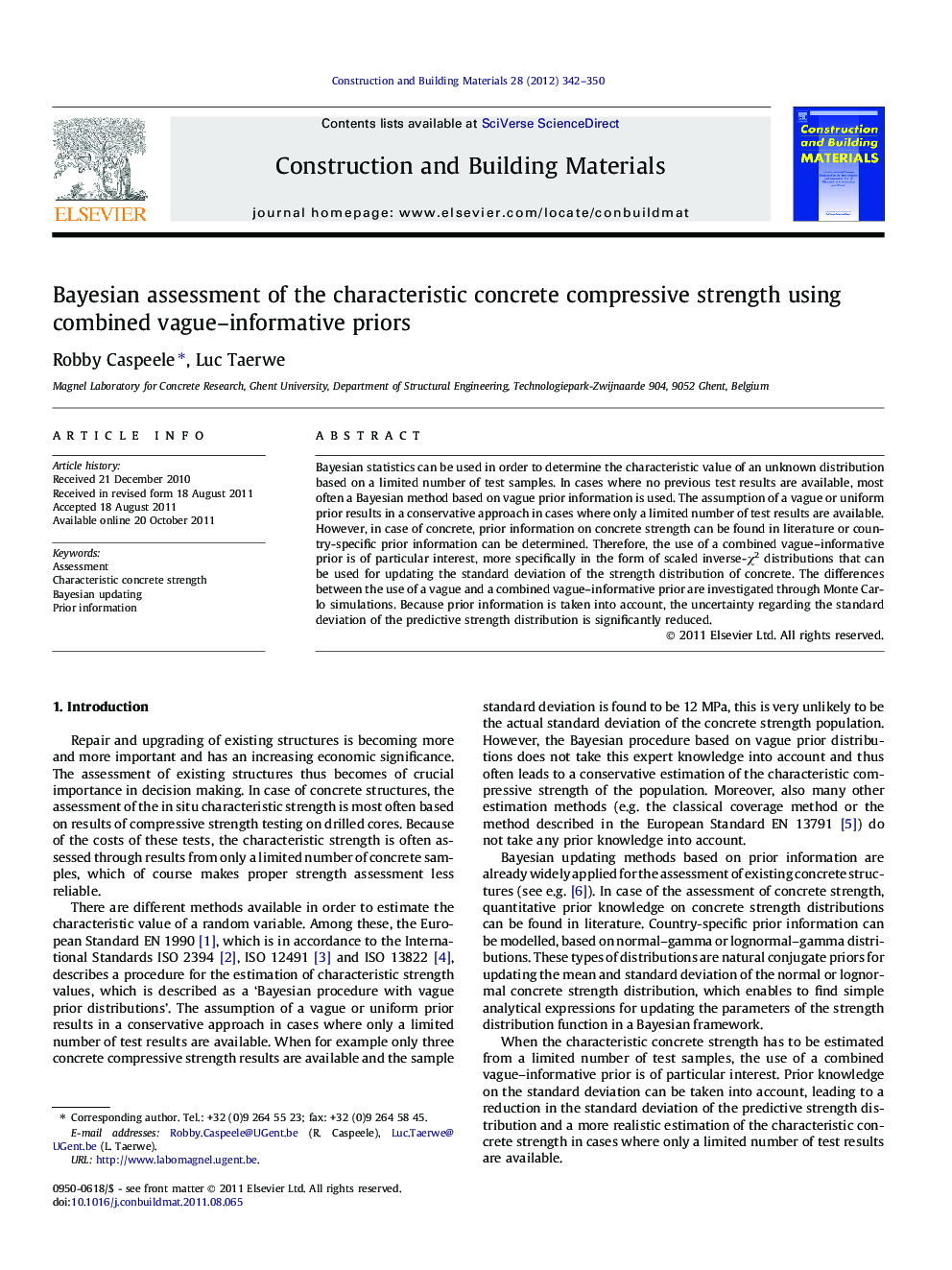| Article ID | Journal | Published Year | Pages | File Type |
|---|---|---|---|---|
| 259583 | Construction and Building Materials | 2012 | 9 Pages |
Bayesian statistics can be used in order to determine the characteristic value of an unknown distribution based on a limited number of test samples. In cases where no previous test results are available, most often a Bayesian method based on vague prior information is used. The assumption of a vague or uniform prior results in a conservative approach in cases where only a limited number of test results are available. However, in case of concrete, prior information on concrete strength can be found in literature or country-specific prior information can be determined. Therefore, the use of a combined vague–informative prior is of particular interest, more specifically in the form of scaled inverse-χ2 distributions that can be used for updating the standard deviation of the strength distribution of concrete. The differences between the use of a vague and a combined vague–informative prior are investigated through Monte Carlo simulations. Because prior information is taken into account, the uncertainty regarding the standard deviation of the predictive strength distribution is significantly reduced.
► Prior information on concrete strength can be gathered. ► Priors can be taken into account when assessing the in situ characteristic concrete strength. ► The influence of different priors can be compared using Monte Carlo simulations. ► Using combined vague–informative priors yields a less conservative Bayesian estimation method. ► Informative priors significantly reduce the bias and variability of the Bayesian estimate.
